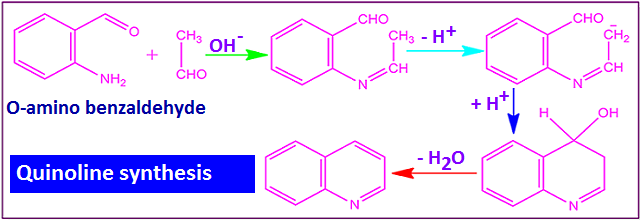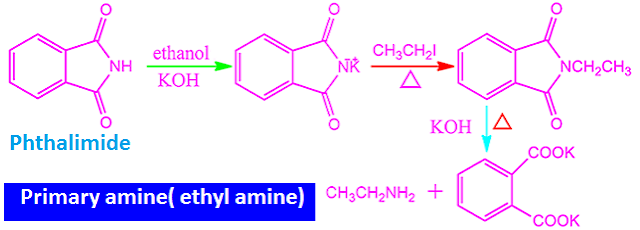What is synthesis chemical reaction in chemistry?
The
term synthesis was first used by the chemist Herman Kolbe. In chemistry, chemical synthesis is the synthesis of
useful chemicals by artificial means.
These reactions consist of few steps to produce product
from reactants. These chemical reactions are known as synthesis chemical reaction.
In other words, the chemical reactions through which
one more reactants are combined to produce essential compounds, that is, the
chemical reactions those are relating to synthetic synthesis, is called synthesis chemical reaction.
In chemical synthesis, one or more reagents or
reactants are added under certain conditions to form a productive substance.
For example, a laboratory synthesis of paracetamol may
consist of three separate synthetic steps.
The desired product is made through synthesis
chemical reaction. There are many techniques in chemical synthesis. Each
chemical synthesis is multistep synthesis.
A large number of organic as well as inorganic compounds are synthesized by
using synthesis chemical reaction.
Synthesis chemical reaction examples
In chemistry, there are two types of chemical synthesis
such as
organic chemical synthesis and inorganic
chemical synthesis.
Synthesis chemical reaction in organic chemistry
The spread of organic chemical synthesis
is far greater and more important than inorganic synthesis.
Because of this, a lot of
organic compounds are synthesized through synthesis chemical reaction. Organic
synthesis is related to the synthesis of organic compounds.
If it starts with a product isolated from a
plant or animal and then progresses to new compounds, synthesis is described as
a semi-synthetic process.
Many
organic compounds are synthesized by synthesis chemical reaction.
A
few of well known and important synthesis chemical reaction for organic
synthesis are listed below.
- Synthesis of paracetamol from nitrobenzene and phenol
- Synthetic synthesis of aspirin from phenol
- Gabriel phthalimide synthesis for primary amine
- Haworth synthesis of naphthalene
- Pschorr synthesis of phenanthrene
- Paal Knorr synthesis of pyrrole derivatives
- Fischer’s indole synthesis of indole
- Friedlander’s or Skraup synthesis of quinoline
- Synthesis of anti malarial drugs, tranquillizer’s drugs, anti biotic etc
Besides these, synthesis of sulfur drugs such as sulfanilamide, sulfadiazine, sulfa guanidine, sulfathiazole etc are also synthesized by synthesis chemical reaction. Chemical synthesis of some organic compound is shown below.
Friedlander’s
synthesis of quinoline
When
o-amino benzaldehyde is condensed with acetaldehyde in aqueous NaOH, then the
synthesis product is quinoline. Acids are also effective catalysts for this
synthesis reaction.
Gabriel
phthalimide synthesis for primary amine
In
Gabriel phthalimide synthesis, phthalimide is reacts first with ethanolic KOH
form potassium phthalimide.
This
potassium phthalate is attached with alkyl halide followed by basic hydrolysis
produce primary amine.
Synthesis chemical reaction in inorganic chemistry
Inorganic chemical synthesis is applied to
prepare inorganic compounds with significant non-organic content.
For
example, preparation of the anticancer drug cis-Platin from tetrachloro- platinate
(II).
- What is synthesis chemical reaction in chemistry?
- Synthesis chemical reaction examples
- Synthesis chemical reaction in organic chemistry
- Synthesis chemical reaction in inorganic chemistry
Synthesis chemical
reaction in chemistry, synthesis chemical reaction examples, synthesis chemical
reaction in organic chemistry, synthesis chemical reaction in inorganic chemistry
Read also : Oxidation of iron in inorganic chemistry













No comments:
Post a Comment